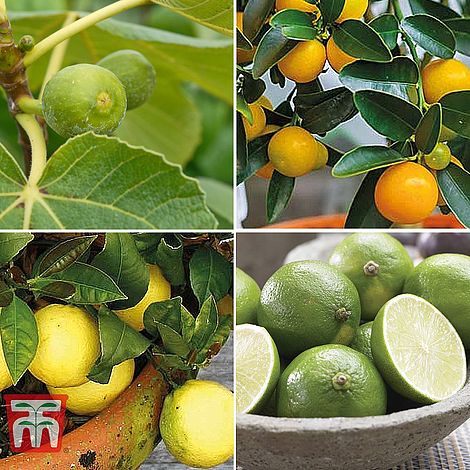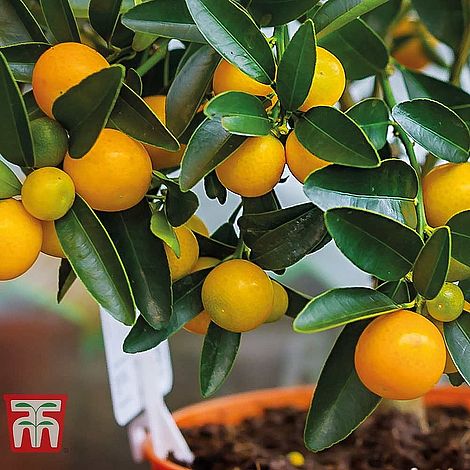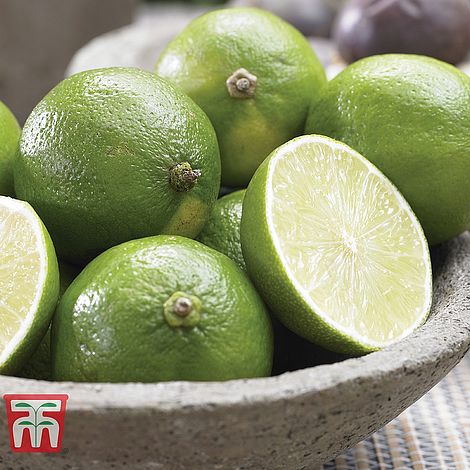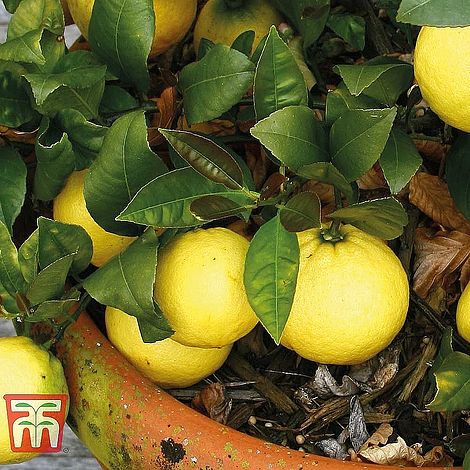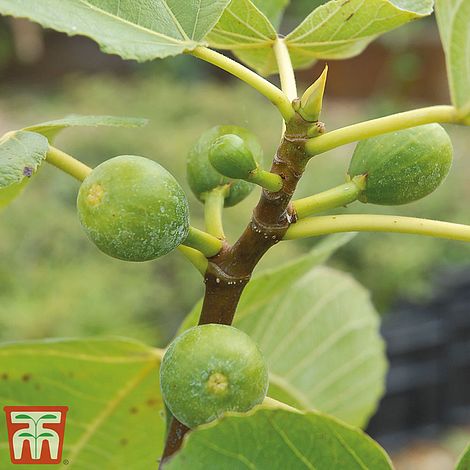




Mediterranean Fruit Collection (Citrus Fruit)Citrus, Ficus caricaOrange, Lemon, Lime, Fig
Half-hardy
£29.99
Grow your own citrus fruits
Harvest fresh figs from your patio
An attractive and productive collection of fruit trees
Out of Stock
 Height Up to 300cm (118in)
Height Up to 300cm (118in)
Spread Up to 250cm (98in)
 Half-hardy
Half-hardy
 patiokitchen gardengreenhouseconservatoryscented gardensexotic gardenspecimen plant
patiokitchen gardengreenhouseconservatoryscented gardensexotic gardenspecimen plant
 full sun
full sun
Why not try this instead
Bring a taste of the Mediterranean to your patio with this generous collection of fruit trees. Citrus trees make fabulous patio plants, thriving outdoors in summer and enjoying a heated greenhouse or conservatory in winter. Green Figs are much hardier, and can be trained against a wall for a tasty crop of green figs. Height: up to 3m (9'). Spread: up to 4m (13').
- Mediterranean Fruit Collection comprises:
- Tahiti Lime - The lovely seedless limes are produced in abundance and if left on the tree will eventually turn yellow.
- Orange ‘Calamondin’ - The small, juicy orange fruits have a bitter taste at first before leaving a delicious sweet flavour in your mouth.
- Lemon Tree - The fruits may take up to a year to ripen but are well worth the wait.
- Green Fig - Enjoy crops of sweet, juicy figs from August to September.
Plant height and spread is seasonal therefore we list by pot size rather than a defined plant size. The height and spread of the plant delivered will vary depending on the season, meaning arrival images are an indication only.
Information on limes
Despatched through autumn and winter you may notice that some of the fruit on your lime tree is actually showing yellow or orange. Rest assured you have received a lime and not an orange or lemon tree.
All limes varieties and species will change from bright green to yellow and orange as they become more ripe.
The limes that are bought in supermarkets are picked very immature to both retain the acidity, firmness and green colour. The flavour will also change with age and the yellow/orange fruits will be significantly sweeter than those that are picked bright green. In addition, limes are usually sold as quite a small round fruit as they are far from fully grown. The ripe fruits are much larger.
Rest assured, if you wish to pick green fruits, you will be able to do so next year when the fruits are at an earlier stage of ripeness.
Show Codes
4 x 9cm Potted Plants (1 of each variety) (KB0580)
Citrus Trees - Plant citrus trees in patio containers in a mix of ericaceous compost and neutral, soil based compost such as John Innes No. 3. Repot the plant at its original soil level and firm well into the new container. Water well and position in a frost free position in full sun.
Fig Trees - Grow fig trees in a sheltered, sunny position. A warm, south facing site against a wall is ideal. Figs prefer a moisture retentive, fertile, well drained soil that is slightly alkaline. Prior to planting fig trees, incorporate plenty of well rotted manure or garden compost into the planting hole. Figs have a vigorous growth habit but can be restricted by constructing a 60cm (2') square, open bottomed brick or concrete pit around the root system. Add a 15cm (6") layer of broken stone to the base of the pit. Alternatively plant figs in large patio containers using a well drained compost such as John Innes No.3. When growing fig trees in containers they should be repotted every two years. If figs are to be wall trained, install support wires prior to planting.
Citrus Trees - Stand citrus trees outside from May to October. Water freely in summer and mist leaves daily to increase humidity and discourage pests. Feed with citrus plant fertiliser every 2 weeks. Move plants indoors from October to a bright, frost free position (4-12°C) away from cold draughts and radiators. Reduce watering in winter but do not let the plant dry out completely. Too much or too little water may cause the fruits to drop.
Fig Trees - Water fig trees regularly, particularly during hot dry periods. Figs will not require much feeding except for a mulch of well rotted manure or compost to the base of the plant in spring. In particularly cold areas container grown plants can be moved to a frost free position in winter to protect the developing fruits and fruit bearing shoot tips from frost. Protect the fruits and stems of figs grown outdoors by wrapping them in a layer of straw and hessian in severe weather.
Figs may be fan trained against a wall or grown as a bush. To bush train: Start pruning fig trees in the first spring after planting. Select 8 to 10 well spaced branches on a clear trunk of at least 60cm (24") and shorten them by half to encourage more branching and to establish a framework. Remove the central stem to just above the highest of the selected branches. Remove any crossing, crowded or damaged shoots from between selected branches to create an open bush.
In following years figs require little pruning except to remove any damaged or misplaced shoots to maintain the open framework. New shoots can be pinch pruned in summer back to 5 or 6 leaves to encourage fruit formation.
When growing figs in the UK climate the fruits will develop in spring and ripen throughout the summer for harvesting in late summer or autumn when soft. A second crop may begin to develop in late summer. Leave these figs intact - any that survive the winter will ripen the following year.
Caution: The foliage and sap of Ficus carica is harmful if eaten and may irritate the skin and eyes.
Caution: The foliage and sap of Ficus carica is harmful if eaten and may irritate the skin and eyes.
Seeds and garden supplies will normally be delivered within the time period stated against each product as detailed above. Plants, bulbs, corms, tubers, shrubs, trees, potatoes, etc. are delivered at the appropriate time for planting or potting on. Delivery times will be stated on the product page above, or in your order acknowledgement page and email.
Orders for packets of seed incur a delivery charge of £2.99.
Orders which include any other products will incur a delivery charge of £6.99.
Where an order includes both packets of seeds and other products, a maximum delivery charge of £7.99 will apply - regardless of the number of items ordered.
Large items may incur a higher delivery charge - this will be displayed in your shopping basket.
Please see our Delivery page for further details, and more information on different charges that may apply to certain destinations.
For more information on how we send your plants please visit our Helpful Guide on plant sizes.

